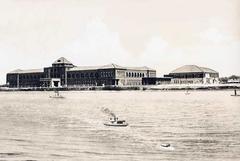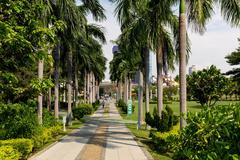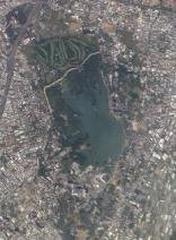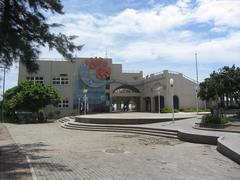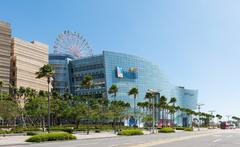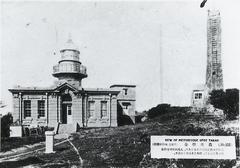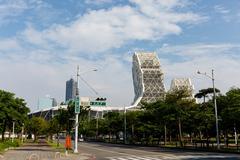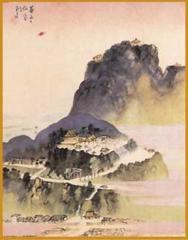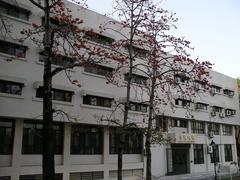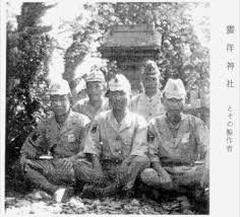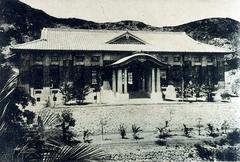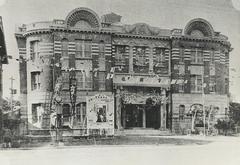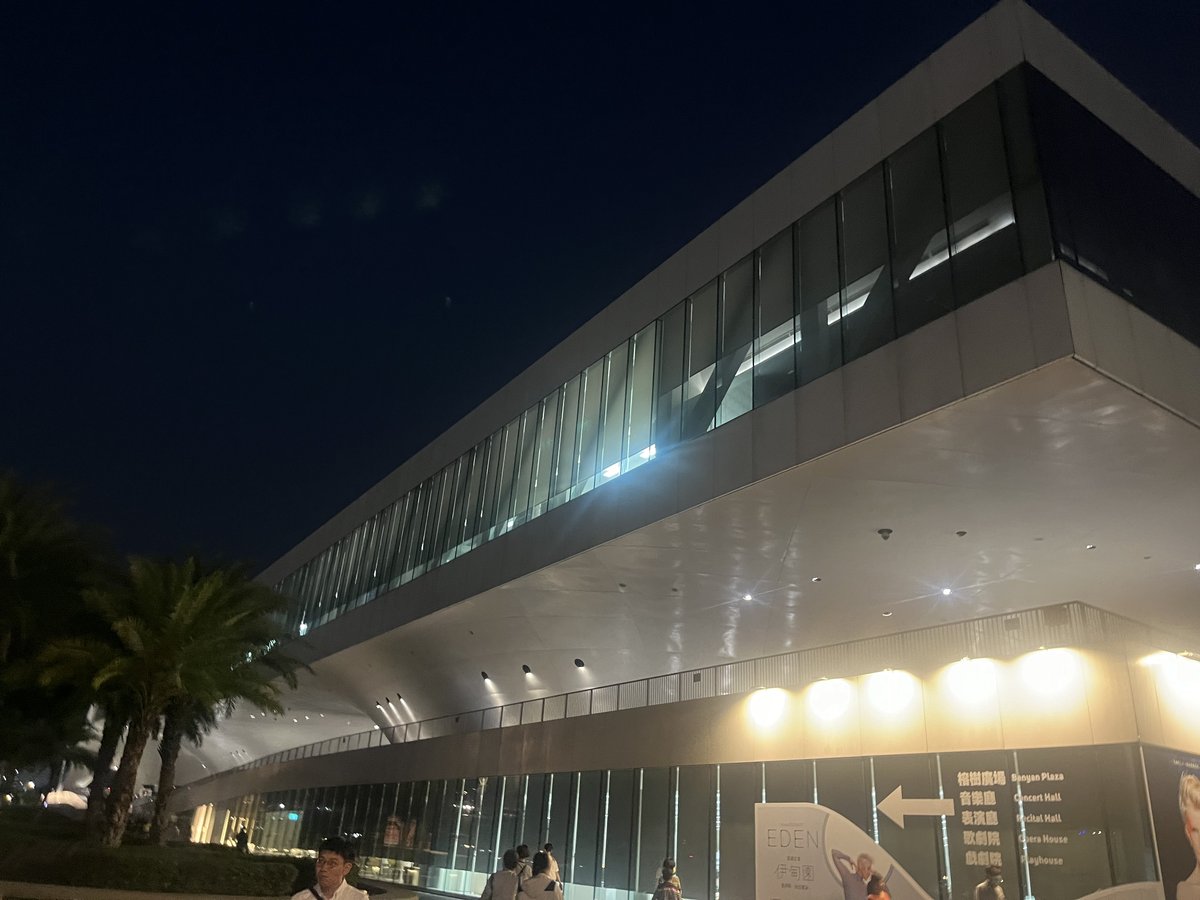
Comprehensive Guide to Visiting WeiWu Mi Mi Village, Kaohsiung, Taiwan
Date: 19/07/2024
Introduction
WeiWu Mi Mi Village, nestled in the Zuoying District of Kaohsiung, Taiwan, is a captivating destination that harmoniously blends a rich historical tapestry with vibrant cultural traditions. This village, with its roots tracing back to the early Qing Dynasty, has evolved from a small agricultural settlement into a significant cultural heritage site. The village’s journey through various historical epochs, from the Qing Dynasty to the Japanese colonial period and the post-war era, showcases Taiwan’s dynamic historical narrative. The introduction of advanced agricultural techniques during the Japanese rule and the subsequent economic diversification in the post-war era were pivotal in shaping the village’s current status. Today, WeiWu Mi Mi Village stands as a testament to Taiwan’s cultural renaissance, with local authorities and community leaders undertaking numerous preservation projects to maintain its traditional architecture and cultural significance (Taiwan History, Japanese Colonial Taiwan). Visitors are drawn to its well-preserved historical landmarks, vibrant cultural festivals, and the unique blend of traditional and contemporary art that adorns the village, making it a must-visit destination for those seeking to immerse themselves in Taiwan’s rich heritage (Cultural Taiwan, Taiwan Tourism).
Table of Contents
- Introduction
- History of WeiWu Mi Mi Village
- Key Historical Landmarks
- Historical Events and Figures
- Visitor Information
- Conclusion
- FAQ
History of WeiWu Mi Mi Village
Origins and Early Development
WeiWu Mi Mi Village’s origins can be traced to the early Qing Dynasty when it was established as a small agricultural settlement. The fertile plains of the region made it an ideal location for rice cultivation, which became the primary economic activity for the early settlers. Historical records indicate that the village was initially known as “WeiWu,” a name derived from the local dialect meaning “prosperous land” (Taiwan History).
Japanese Colonial Period
The history of WeiWu Mi Mi Village took a significant turn during the Japanese colonial period (1895-1945). Under Japanese rule, Taiwan underwent extensive modernization and infrastructural development. WeiWu Mi Mi Village was no exception. The Japanese administration introduced advanced agricultural techniques and irrigation systems, which greatly enhanced rice production. Additionally, the village saw the construction of new roads and public buildings, some of which still stand today as historical landmarks (Japanese Colonial Taiwan).
Post-War Era and Economic Transformation
Following the end of World War II and the subsequent retreat of Japanese forces, Taiwan was placed under the administration of the Republic of China (ROC). The post-war era marked a period of significant transformation for WeiWu Mi Mi Village. The agrarian economy began to diversify, with many villagers turning to small-scale manufacturing and trade. The 1960s and 1970s saw the establishment of several family-owned businesses, which contributed to the village’s economic growth and development (ROC Taiwan History).
Cultural Renaissance and Preservation Efforts
In the late 20th century, WeiWu Mi Mi Village experienced a cultural renaissance. Recognizing the historical and cultural significance of the village, local authorities and community leaders initiated several preservation projects. These efforts aimed to restore and maintain the village’s traditional architecture, including the iconic Hakka-style houses and ancestral halls. The village also became a hub for cultural festivals and events, celebrating traditional Taiwanese customs and practices (Cultural Taiwan).
Modern-Day Significance
Today, WeiWu Mi Mi Village stands as a testament to Taiwan’s rich cultural heritage and historical evolution. It has become a popular tourist destination, attracting visitors from around the world who come to explore its well-preserved historical sites and experience its unique cultural offerings. The village’s historical significance is further underscored by its inclusion in various cultural heritage lists and its recognition by the Taiwanese government as a protected historical site (Taiwan Tourism).
Key Historical Landmarks
WeiWu Ancestral Hall
One of the most notable historical landmarks in WeiWu Mi Mi Village is the WeiWu Ancestral Hall. Built during the Qing Dynasty, this hall served as a place for villagers to honor their ancestors and conduct important community ceremonies. The hall’s architecture is a fine example of traditional Hakka design, featuring intricate wood carvings and ornate decorations. It remains a focal point for cultural activities and is a must-visit for anyone interested in the village’s history (Hakka Culture).
Japanese-Era School Building
Another significant historical site is the Japanese-era school building, constructed in the early 20th century. This building symbolizes the educational advancements brought about during the Japanese colonial period. Although no longer functioning as a school, the building has been preserved as a historical monument and now houses a small museum showcasing artifacts from the colonial era (Japanese Colonial Architecture).
Historical Events and Figures
The 1947 Kaohsiung Incident
WeiWu Mi Mi Village was also affected by the 1947 Kaohsiung Incident, a significant event in Taiwan’s modern history. The incident, which involved clashes between local Taiwanese and the ROC government, had a profound impact on the village. Several villagers participated in the protests, and the event is commemorated annually to honor those who fought for Taiwan’s democratic rights (Kaohsiung Incident).
Prominent Historical Figures
The village has been home to several prominent historical figures, including Dr. Lin Hsien-tang, a renowned scholar and social activist. Dr. Lin played a crucial role in advocating for Taiwanese cultural preservation and was instrumental in the early efforts to document and protect the village’s historical sites (Taiwanese Scholars).
Visitor Information
Visiting Hours and Tickets
WeiWu Mi Mi Village is open to visitors year-round. The typical visiting hours are from 9:00 AM to 5:00 PM. Entrance to the village is free, but certain landmarks, like the WeiWu Ancestral Hall and the Japanese-era school building, may have small admission fees.
Accessibility and Travel Tips
The village is accessible by public transportation, with several bus routes stopping nearby. For those driving, there are parking facilities available. It is recommended to wear comfortable shoes as the village streets are cobbled, and to bring a camera to capture the picturesque scenery.
Nearby Attractions
Visitors can also explore nearby attractions such as Lotus Pond, Dragon and Tiger Pagodas, and the Kaohsiung National Stadium. These sites provide additional cultural and recreational opportunities for tourists.
Conclusion
WeiWu Mi Mi Village’s history is a tapestry of cultural, economic, and social transformations. From its early days as an agricultural settlement to its current status as a cultural heritage site, the village offers a unique glimpse into Taiwan’s rich historical narrative. Visitors to WeiWu Mi Mi Village can immerse themselves in this history, exploring its well-preserved landmarks and participating in its vibrant cultural traditions.
FAQ
Q: What are the visiting hours for WeiWu Mi Mi Village?
A: The village is open from 9:00 AM to 5:00 PM daily.
Q: How much do tickets cost for WeiWu Mi Mi Village?
A: Entrance to the village is free, but certain landmarks may have small admission fees.
Q: What are the best nearby attractions?
A: Nearby attractions include Lotus Pond, Dragon and Tiger Pagodas, and the Kaohsiung National Stadium.
For more information and updates, follow us on social media or visit our official website.
References
- Taiwan History, n.d., https://www.taiwanhistory.org
- Japanese Colonial Taiwan, n.d., https://www.japanesecolonialtaiwan.org
- ROC Taiwan History, n.d., https://www.roctaiwanhistory.org
- Cultural Taiwan, n.d., https://www.culturaltaiwan.org
- Taiwan Tourism, n.d., https://www.taiwantourism.org
- Hakka Culture, n.d., https://www.hakkaculture.org
- Japanese Colonial Architecture, n.d., https://www.japanesecolonialarchitecture.org
- Kaohsiung Incident, n.d., https://www.kaohsiungincident.org
- Taiwanese Scholars, n.d., https://www.taiwanesescholars.org

